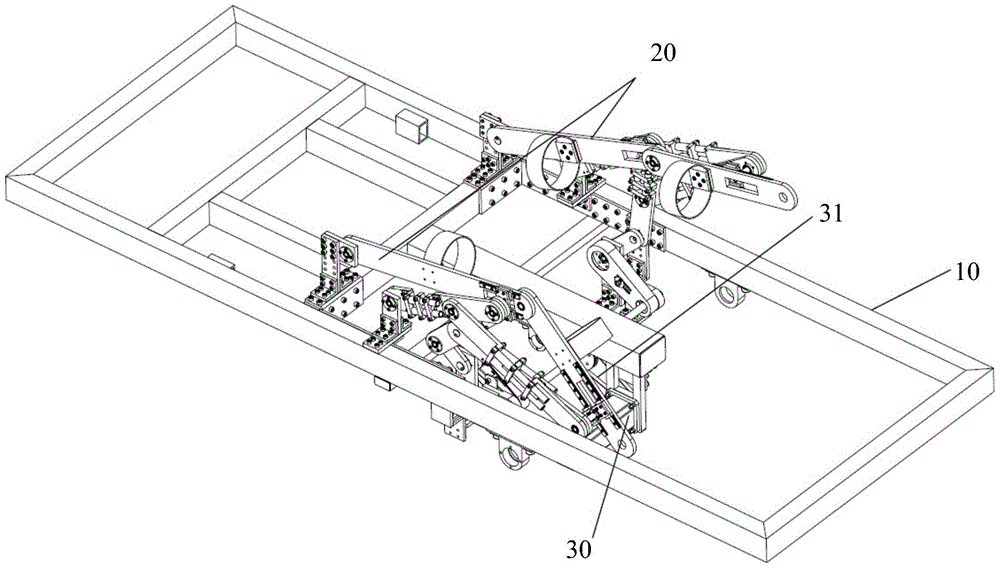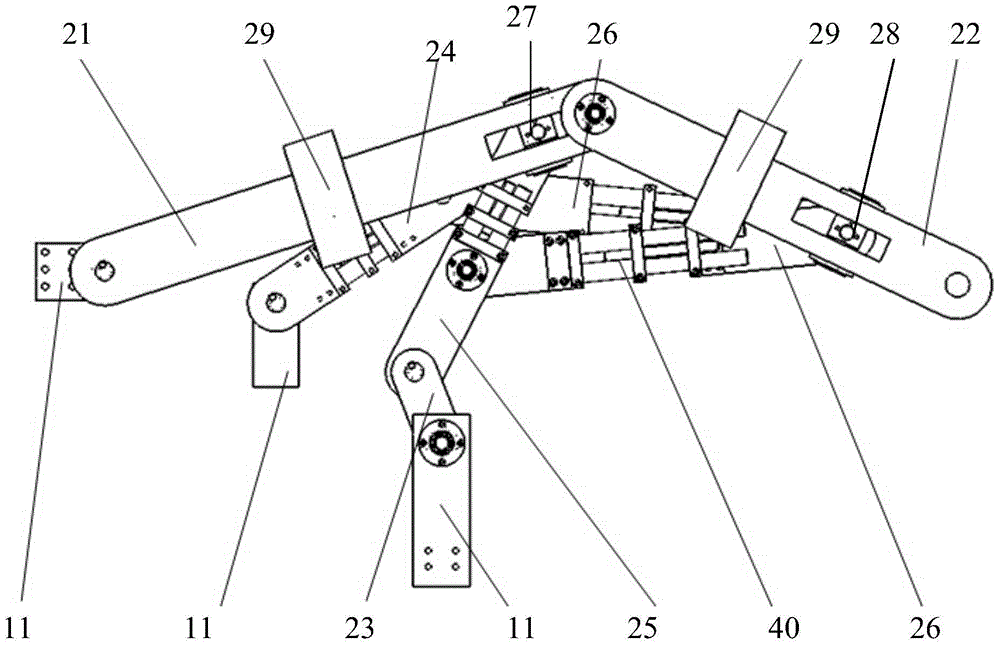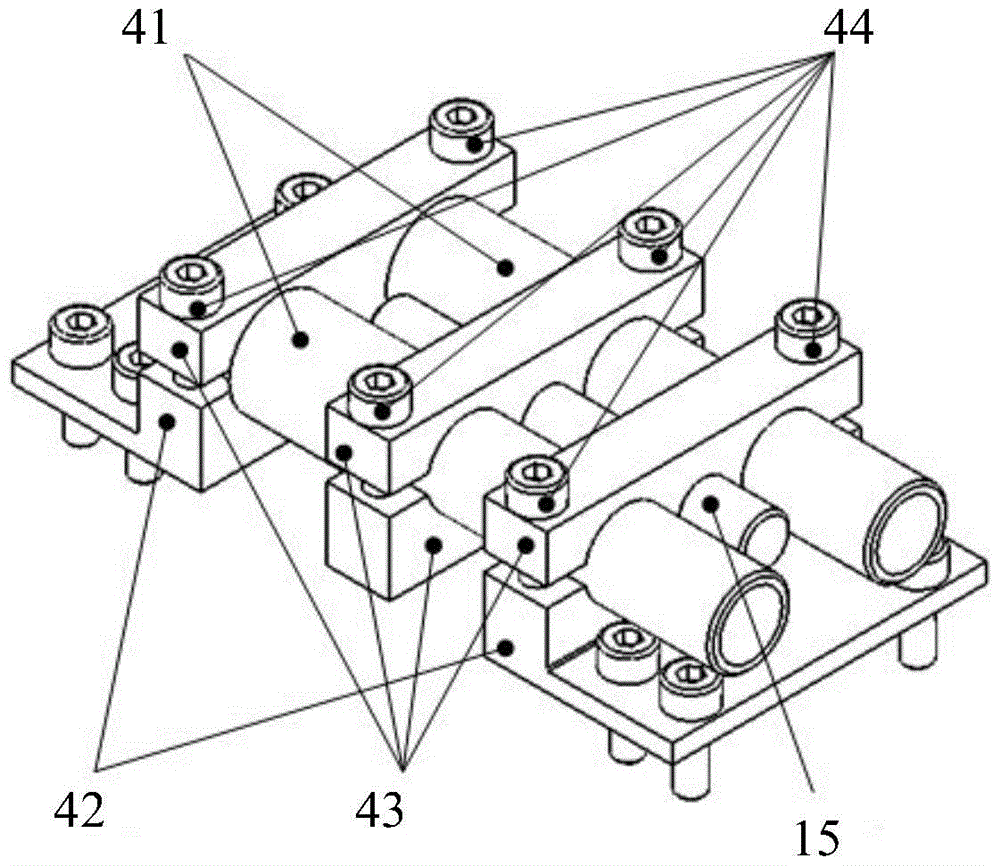A lower limb rehabilitation training device
A trainer and lower limb technology, applied in passive exercise equipment, physical therapy and other directions, can solve the problems of patients not paying enough attention, limit the flexibility of exoskeleton, hip joint motor burden, etc., and achieve a unique movement trajectory and simplified structure , the effect of reducing complexity
- Summary
- Abstract
- Description
- Claims
- Application Information
AI Technical Summary
Problems solved by technology
Method used
Image
Examples
Embodiment Construction
[0031] Most of the existing lower limb rehabilitation robots use a suspension-type weight-reducing walking mechanism, but this mechanism is only suitable for post-rehabilitation patients who have the ability to walk, and is limited by the traditional exoskeleton structure. The knee joint motor needs to be connected to the lower limb arm. , causing a greater burden on the hip joint motor, while limiting the flexibility of the exoskeleton. The multi-position bed-type rehabilitation training robot can adapt to patients in different rehabilitation training stages, but the lower limb rehabilitation training structure of most of these robots still adopts a multi-joint exoskeleton training mechanism, which is configured at the hip, knee and ankle joints of the lower limbs. One drive motor realizes the movement, which makes the mechanism complicated, high in cost, and difficult to realize the control.
[0032] Aiming at the deficiencies in the prior art, the present invention provides...
PUM
 Login to View More
Login to View More Abstract
Description
Claims
Application Information
 Login to View More
Login to View More - R&D
- Intellectual Property
- Life Sciences
- Materials
- Tech Scout
- Unparalleled Data Quality
- Higher Quality Content
- 60% Fewer Hallucinations
Browse by: Latest US Patents, China's latest patents, Technical Efficacy Thesaurus, Application Domain, Technology Topic, Popular Technical Reports.
© 2025 PatSnap. All rights reserved.Legal|Privacy policy|Modern Slavery Act Transparency Statement|Sitemap|About US| Contact US: help@patsnap.com



